Farro is a nutritious and delicious grain that has been enjoyed for centuries.
It’s versatile, flavorful, and an excellent source of protein, fiber, vitamins, minerals, and antioxidants.
But not everyone can find farro in their local grocery store or health food store.
Or maybe you’re looking for something different to add to your meals but don’t want to buy another bag of farro.
If this sounds like you then look no further!
Here are the 14 best substitutes for farro that will still give you all the nutritional benefits without having to go out of your way to get it.
What is Farro?

Farro is an ancient grain that has been used for centuries and is still popular in many parts of the world today.
It comes from wheat and resembles cracked wheat or bulgur, but with a slightly chewy texture.
Farro can be found in two forms: pearled, which has had some of its bran layer removed; or whole-grain farro, which contains all layers of the seed intact.
The most common type available in North America is pearled farro; while more traditional uses often call for whole-grain varieties such as emmer or spelt.
When cooked, farro takes on a nutty flavor and creamy consistency similar to rice.
It can be enjoyed hot or cold as part of salads, soups, pilafs, or other dishes that call for grains like barley or quinoa.
Farro also works well when mixed with vegetables like mushrooms, squash, and greens — it’s especially good when combined with beans for a hearty vegetarian meal.
The 14 Best Substitutes For Farro
Farro is a nutritious and delicious grain, but it can be hard to find in some places.
If you’re looking for an alternative, here are fourteen substitutes that will still give you the same benefits:
1 – Quinoa

Quinoa is a great alternative to farro, as it has a similar texture and nutty flavor.
It’s also gluten-free, so it can be used in recipes that require avoiding wheat or other grains.
When cooked, quinoa has a fluffy yet chewy texture that makes it ideal for salads and side dishes.
It can also be used to make pilafs, risottos, and soups.
For an interesting twist on traditional tacos, try using quinoa instead of ground beef – the grain adds protein and fiber while keeping things light and healthy.
You can even use quinoa as a substitute for oatmeal in breakfast bowls or smoothies!
2 – Barley

Barley is a versatile grain that can be used in many different dishes.
It has a nutty, earthy flavor and chewy texture that makes it an excellent substitute for farro.
Barley can be cooked like rice or boiled in soups and stews.
It also works well as a side dish, either plain or with vegetables added to it.
For salads, barley can be combined with roasted vegetables, nuts, and feta cheese for a hearty meal.
You can even use it to make risotto-style dishes by cooking the grains slowly in broth until creamy and tender.
In addition to its culinary uses, barley is also great for baking breads and muffins – just replace the farro with equal parts of barley flour!
3 – Spelt

Spelt is an ancient grain that has been around for thousands of years.
It is a type of wheat, but its unique characteristics make it a great alternative to farro.
Spelt has a nutty flavor and chewy texture that makes it ideal for salads, soups, and stews.
It can also be used as a substitute for rice in dishes like risotto or pilafs.
For breakfast, try using spelt instead of oatmeal or porridge.
It cooks quickly and provides an interesting twist on the classic morning meal.
You can also use spelt as a base for homemade breads and muffins – just remember to adjust the baking time accordingly!
4 – Buckwheat
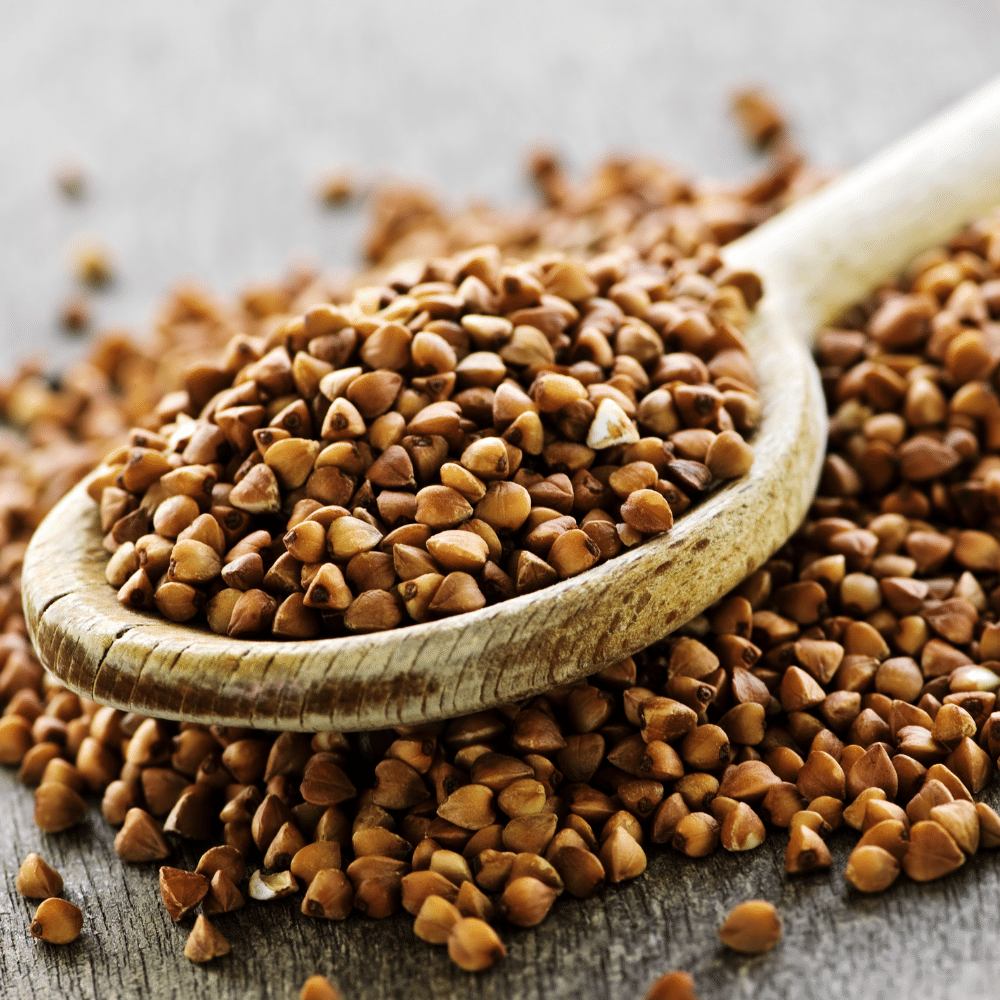
Buckwheat is a versatile grain that can be used as an alternative to farro in many recipes.
It has a nutty flavor and chewy texture, making it great for salads, soups, and pilafs.
Buckwheat is also high in protein and dietary fiber, so it makes for a nutritious addition to any meal.
When substituting buckwheat for farro, you may need to adjust the cooking time as buckwheat cooks faster than farro.
For example, when making risotto or pilafs with buckwheat instead of farro, reduce the cooking time by about half.
Buckwheat can also be used in place of oats for breakfast porridge or added to smoothies for extra nutrition and texture.
It’s also great as a base ingredient in veggie burgers or falafel patties!
5 – Bulgur Wheat
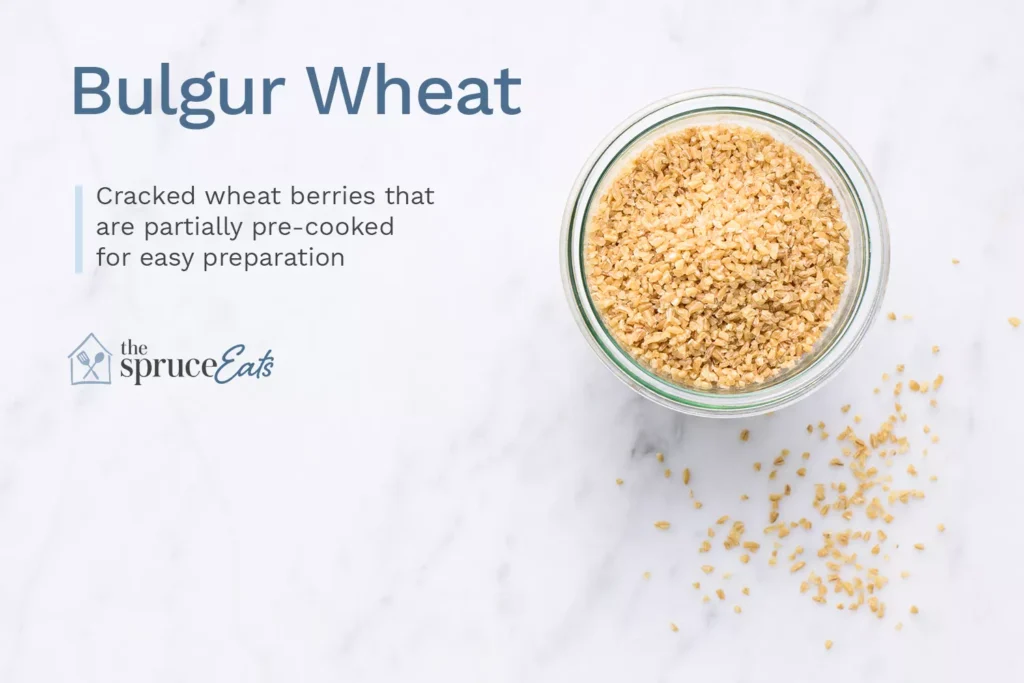
Bulgur wheat is a whole grain that has been parboiled, dried, and cracked into small pieces.
It has a nutty flavor and chewy texture that makes it an ideal replacement for farro in many recipes.
For example, bulgur wheat can be used to make a hearty salad with vegetables and herbs or as the base of a flavorful pilaf dish.
It also works well in soups and stews, adding texture and flavor without needing to be cooked for long periods of time.
In addition, bulgur wheat can be used as a stuffing for roasted vegetables or baked into casseroles with other grains like quinoa or rice.
Its versatility makes it perfect for creating delicious meals with minimal effort.
6 – Freekeh

Freekeh is a Middle Eastern grain made from roasted green wheat.
It has a smoky, nutty flavor and chewy texture that makes it an excellent substitute for farro in dishes like soups and salads.
Freekeh can be cooked similarly to rice or quinoa – just simmer it in water until tender.
For a flavorful side dish, try sautéing freekeh with garlic, onions, and spices before adding broth or stock.
You can also use freekeh as the base of a savory stuffing or mix it into veggie burgers for added texture.
To make your meal even more special, top off the finished dish with herbs, nuts, dried fruit, or cheese for an extra burst of flavor!
7 – Wheat berries
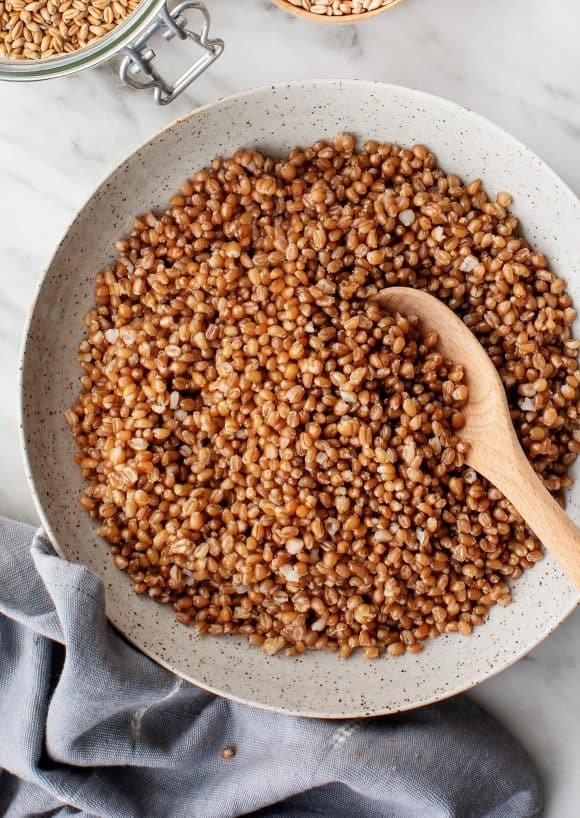
Wheat berries are a whole grain that can be used as an alternative to farro.
They have a nutty flavor and chewy texture, making them ideal for salads or side dishes.
To prepare wheat berries, you’ll need to soak them overnight before cooking in boiling water for about 45 minutes.
For a delicious dinner option, try combining cooked wheat berries with sautéed vegetables and your favorite protein.
You can also use wheat berries in place of farro in soups or stews for added texture and flavor.
For breakfast, try adding cooked wheat berries to oatmeal or yogurt bowls along with fresh fruit and nuts for a nutritious start to the day.
8 – Rye berries
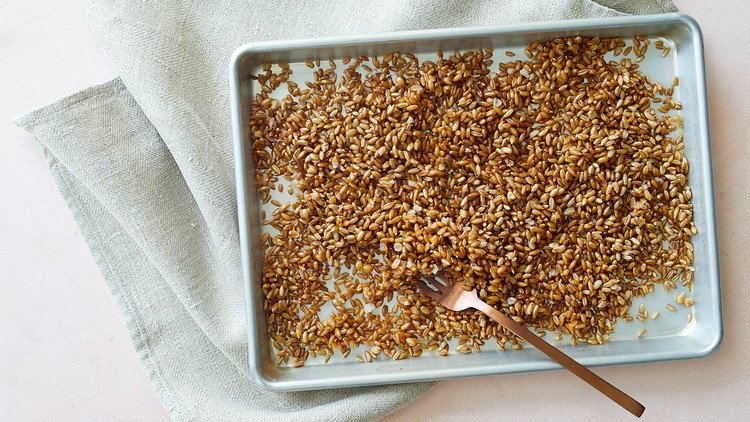
Rye berries are a type of whole grain that has a chewy texture and nutty flavor.
They can be used as an alternative to farro in many recipes, such as salads, soups, and casseroles.
Rye berries have a slightly sweet taste and can be cooked like other grains, such as rice or quinoa.
For example, try using rye berries instead of farro in your favorite risotto recipe for an earthy twist on the classic Italian dish.
Or use them to make a hearty salad by combining them with roasted vegetables and feta cheese.
You can also replace farro with rye berries when making stuffing for Thanksgiving dinner – the nutty flavor will add depth to the traditional flavors of sage and onion.
9 – Triticale berries
Triticale berries are a hybrid grain that combines wheat and rye, creating a nutty flavor with a chewy texture.
They can be used as an alternative to farro in salads, soups, pilafs, risottos and more.
Triticale berries are especially delicious when cooked in broth or stock for added flavor.
For example, you could use triticale berries instead of farro in a roasted vegetable soup by adding the grains at the end of cooking time to keep them al dente.
You could also substitute triticale berries for farro in a Mediterranean-style salad with feta cheese and olives.
The nutty flavor of the triticale pairs perfectly with these ingredients while providing an interesting twist on traditional recipes.
10 – Oat groats
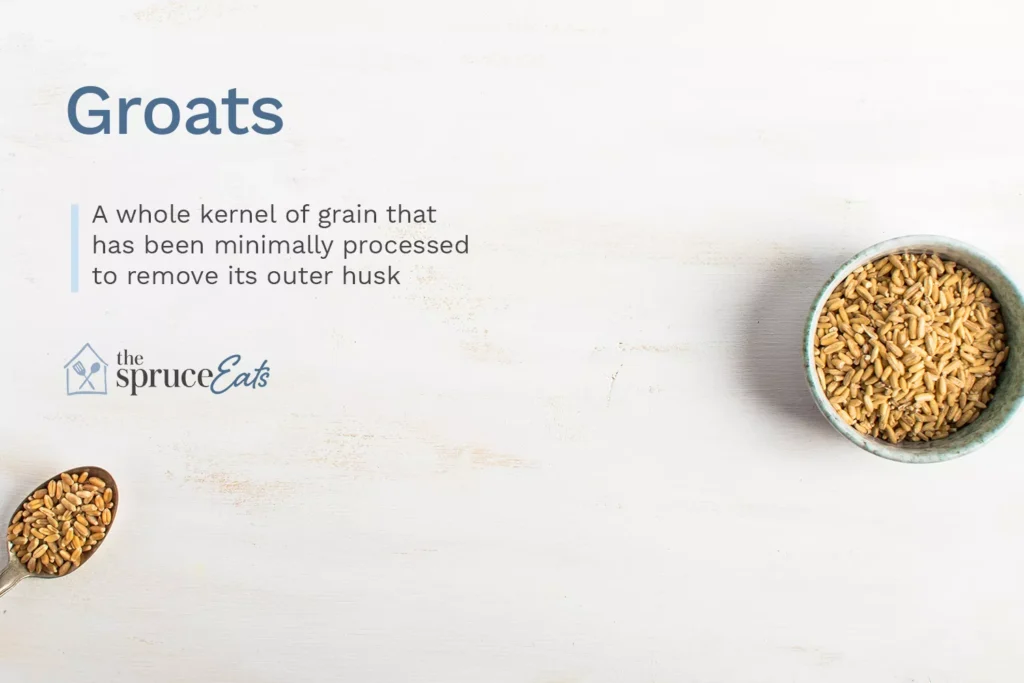
Oat groats are whole grains that have been harvested and processed to remove the inedible hulls.
These hearty, chewy grains can be cooked like rice or used as a base for soups and stews.
They have a mild nutty flavor, making them perfect for adding texture and flavor to dishes.
When substituting oat groats for farro, they can be cooked in the same way – simply simmering them until tender with some salt and pepper will do the trick!
For example, oat groats can make a great addition to salads or grain bowls.
They also work well as an alternative to farro in risottos or pilafs.
Alternatively, you could use them as a topping on roasted vegetables or even mix them into your favorite cookie recipes!
11 – Kasha

Kasha is a type of roasted buckwheat that has been enjoyed in Eastern Europe for centuries.
It has a nutty flavor and chewy texture, making it an ideal substitute for farro in many dishes.
Kasha can be used to make pilafs, risottos, or salads with vegetables and herbs.
It also works well as a stuffing for poultry or pork.
For breakfast, kasha can be cooked like oatmeal with milk and sweetened with honey or maple syrup.
In addition to being versatile in the kitchen, kasha is also high in protein and fiber – perfect for those looking to add more nutrition into their diet without sacrificing taste!
12 – Winter wheat
Winter wheat is a type of cereal grain that can be used in place of farro in many recipes.
Winter wheat can be cooked like rice, boiled with vegetables and herbs to make a hearty winter soup, or added to salads for extra crunch.
For baking, it can be substituted one-to-one for farro in breads and muffins.
In addition, winter wheat makes an excellent stuffing for roasted poultry or pork dishes – just mix it with some sautéed vegetables and herbs before spooning into the cavity of your favorite bird or roast!
13 – Teff
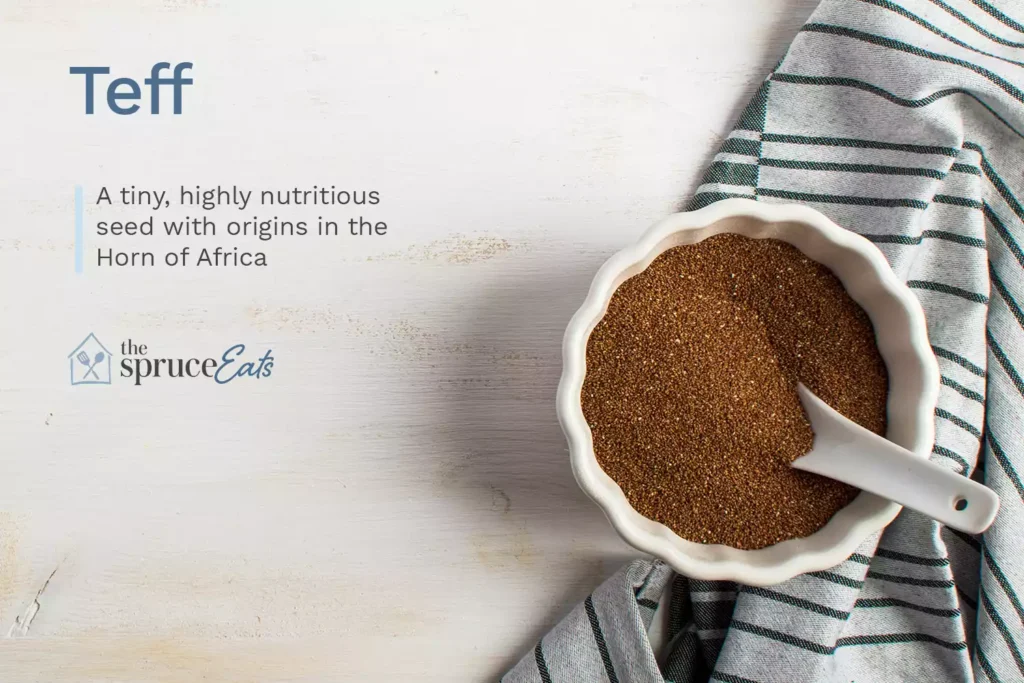
Teff is a tiny, gluten-free grain that has been grown in Ethiopia for thousands of years.
It has a mild nutty flavor and chewy texture that makes it an excellent substitute for farro in recipes.
The small size of the grains means they cook quickly, making them ideal for use in salads or as a side dish.
They can also be used to make porridge or added to soups and stews for extra heartiness and nutrition.
For example, you could replace farro with teff when making tabbouleh salad – simply add cooked teff instead of the traditional bulgur wheat or couscous.
You could also swap out farro with teff when making risotto; just remember to reduce the amount of liquid used since teff absorbs more than other grains do.
14 – Rice
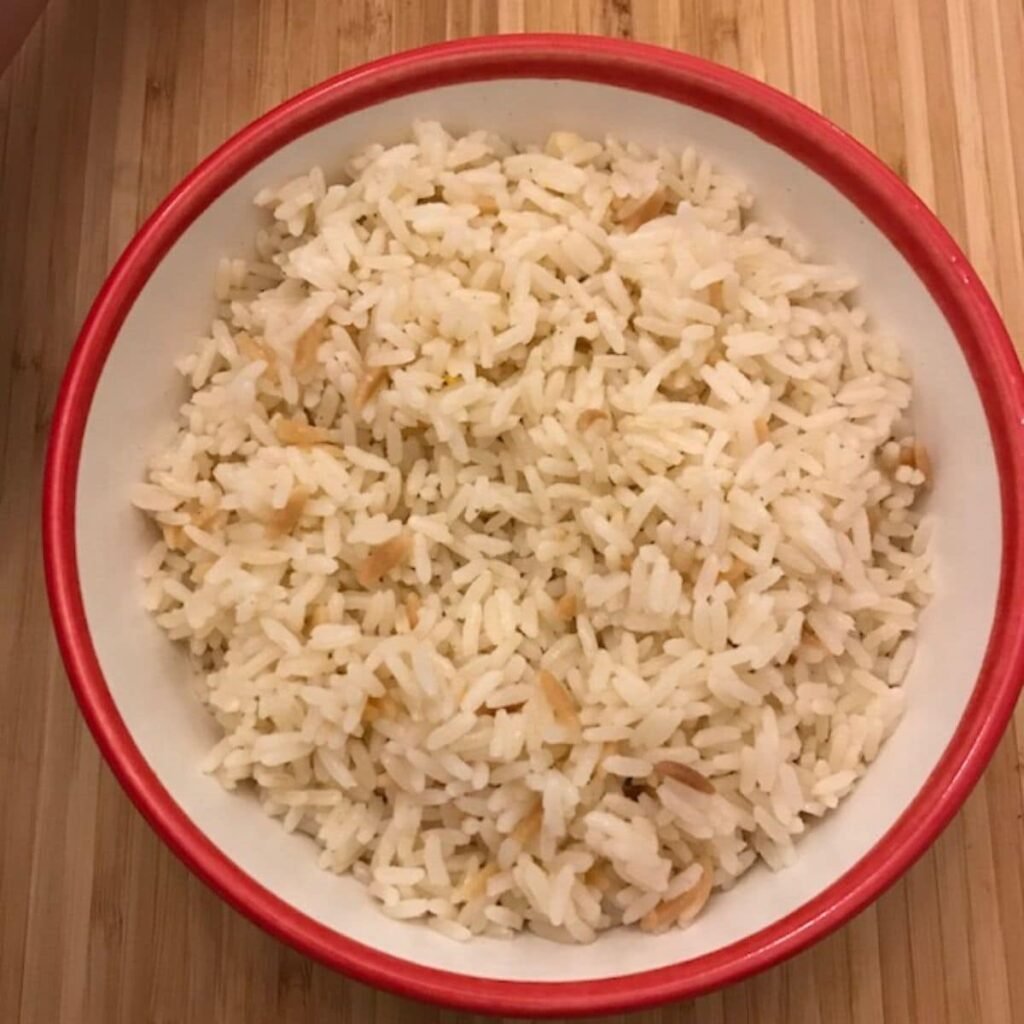
Rice is a versatile grain that can be used as an alternative to farro in many recipes.
For example, you can use it in place of farro for a delicious risotto.
Simply cook the rice with butter and onion until lightly browned, then add your favorite vegetables and stock.
Simmer until creamy and serve with freshly grated Parmesan cheese.
You can also use rice instead of farro in salads or stir-fries.
To make a healthy side dish, simply cook the rice according to package instructions then mix with cooked vegetables and seasonings of your choice.
Finally, you can even use rice instead of farro when making soups or stews.
Cook the rice separately before adding it to your soup or stew for extra flavor and texture.
You may need to adjust cooking times depending on what type of rice you are using, but overall this swap should work out great!
Conclusion
In conclusion, farro is a versatile grain that can be used in a variety of dishes. If you’re looking for a replacement for farro, there are plenty of options.
Some of the best substitutes for farro include quinoa, barley, spelt, buckwheat, bulgur wheat, freekeh, wheat berries, rye berries, triticale berries, oat groats, kasha, winter wheat, teff, and rice. All of these grains have a similar texture and flavor profile to farro, making them excellent options for replacing farro in recipes.
So the next time you’re looking for a farro substitute, give one of these grains a try and see how it works in your dish!

The 14 Best Substitutes For Farro
Ingredients
- Quinoa
- Barley
- Spelt
- Buckwheat
- Bulgur Wheat
- Freekeh
- Wheat berries
- Rye berries
- Triticale berries
- Oat groats
- Kasha
- Winter wheat
- Teff
- Rice
Instructions
- Pick your favorite substitute from the list above.
- Follow cooking directions for your selected substitute with the proper ratio of ingredients.
Hi, I'm Benjamin. I love cooking, long walks, and my girlfriend! Here you’ll find simple and delicious recipes that you can make in 30 minutes or less.

